 W
WThe 1957 alleged Jordanian military coup attempt refers to violent confrontations on 13 April 1957 at the large army barracks in Zarqa between mostly Bedouin units loyal to King Hussein and Arab nationalist units.
 W
WThe 1959 Mosul Uprising was an attempted coup by Arab nationalists in Mosul who wished to depose the then Iraqi Prime Minister Abd al-Karim Qasim, and install an Arab nationalist government which would then join the Republic of Iraq with the United Arab Republic. Following the failure of the coup, law and order broke down in Mosul, which witnessed several days of violent street battles between various groups attempting to use the chaos to settle political and personal scores.
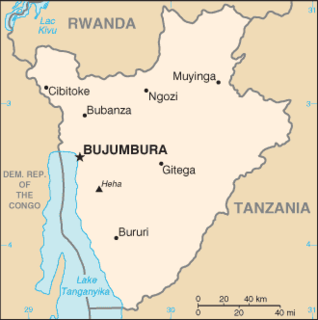 W
WOn 18–19 October 1965, a group of ethnic Hutu officers from the Burundian military attempted to overthrow Burundi's government in a coup d'état. The rebels were angry about the apparent favouring of ethnic Tutsi minority by Burundi's monarchy after a period of escalating ethnic tension following national independence from Belgium in 1962. Although the Prime Minister was shot and wounded, the coup failed and soon provoked a backlash against Hutu in which thousands of people, including the participants in the coup, were killed. The coup also facilitated a militant Tutsi backlash against the moderate Tutsi monarchy resulting in two further coups which culminated in the abolition of Burundi's historic monarchy in November 1966 and the rise of Michel Micombero as dictator.
 W
WThe 1971 Sudanese coup d'état was a short-lived communist-backed coup, led by Major Hashem al Atta, against the government of President Gaafar Nimeiry. The coup took place on 19 July 1971, toppling the government of the Democratic Republic of the Sudan, but failed to garner support either domestically or internationally. After several days Nimeiry loyalists launched a counter-coup, freeing Nimeiry and toppling Atta's government.
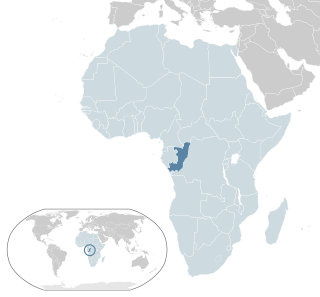 W
WOn February 22, 1972 a faction loyal to Ange Diawara attempted a coup against President Marien Ngouabi. Joachim Yhombi-Opango was instrumental in ending the coup. The musician Franklin Boukaka was killed in the coup, as was former Minister Élie Théophile Itsihou. After more than a year of evading capture Diawara was ambushed and killed in April 1973 by forces loyal to Ngouabi.
 W
WThe 1976 Nigerian coup d'état attempt was a military coup attempt which took place in Nigeria on 13 February 1976 when a faction of Armed Forces officers, led by Lieutenant Colonel Buka Suka Dimka, attempted to overthrow the government of General Murtala Mohammed.
 W
WThe 1977 Sudanese Juba coup d'état attempt was an unsuccessful coup, led by 12 Air Force members who had previously been members of Anyanya. The exact specifications of the coup attempt vary, although tend to focus on a failed attempt by the group to take the airport.
 W
WThe 1978 Somali coup d'état attempt was a violent military coup attempt that took place in Somalia on 9 April 1978, against the regime of President Siad Barre. The United States Central Intelligence Agency estimated that the coup, led by Colonel Mohamed Osman Irro, involved around 24 officers, 2,000 soldiers, and 65 tanks. Following the failed coup, 17 alleged ringleaders, including Osman, were summarily executed by firing squad.
 W
WThe 1981 Mauritanian coup d'état attempt was a violent coup attempt in Mauritania which took place on 16 March 1981. The coup attempt, staged by elements of the military and opposition Alliance for a Democratic Mauritania (AMD) movement, was led by Lieutenant Colonel Ahmed Salim Ould Sidi and Lieutenant Colonel Mohamed Abdelkader, and resulted in heavy fighting in the capital Nouakchott, before conspirators were defeated by troops loyal to the Head of State, Colonel Mohamed Khouna Ould Haidalla.
 W
WThe 1981 Seychelles coup d'état attempt, sometimes referred to as the Seychelles affair or Operation Angela, was a failed South African–orchestrated coup to overthrow the government of Prime Minister France-Albert René in Seychelles and install the previous president James Mancham to power. The South African government encouraged a mercenary force to orchestrate the change of government but the poorly organised and underfunded operation was obstructed when a Seychelles customs official discovered weapons in the baggage of one of the arriving mercenaries and raised the alarm. After an extended firefight, the mercenaries hijacked an aircraft and fled to Durban in South Africa. They were charged in the South African courts but received lenient sentences. United Nations and the South African Truth and Reconciliation Commission enquiries condemned the South African government for their participation in an attempt to overthrow a neighbouring government.
 W
WThe 1986 Togolese coup d'état attempt was a coup attempt that occurred in the West African country of Togo on 23 September 1986. The coup attempt consisted of a group of some 70 armed dissidents crossed into capital Lomé from Ghana in an unsuccessful attempt to overthrow the government of President General Gnassingbé Eyadéma.
 W
WFrom July to September 1987 forces loyal to Denis Sassou Nguesso defeated Kouyous forces which attempted to overthrow his regime. Pierre Anga, one of the coup leaders, fled to Owando where he was killed on September 6, 1987 ending the coup.
 W
WThe 1988 Maldives coup d'état attempt was the attempt by a group of Maldivians led by businessman Abdullah Luthufi and assisted by armed mercenaries of a Tamil secessionist organisation from Sri Lanka, the People's Liberation Organisation of Tamil Eelam (PLOTE), to overthrow the government in the island republic of Maldives. The coup d'état failed after the Maldivian National Security Service eliminated the rebel leaders of PLOTE. At the realization of the attacks failure, the rebel group hijacked a Maldivian freighter named MV Progresslight and attempted to escape to Sri Lanka. After the rebels escaped, the Indian Navy was called for help and they intercepted and captured the mercenaries and they were brought into custody in an operation codenamed Operation Cactus.
 W
WThe 1989 Haitian coup d'état attempt was a bloodless military coup attempt that took place in Haiti on 1–2 April 1989, when a group of rebel army officers attempted to overthrow the military government of Lt. Gen. Prosper Avril.
 W
WThe 1990 Nigerian coup d'état attempt was a military coup attempt which took place in Nigeria on 22 April 1990 when a faction of Armed Forces officers, led by Major Gideon Orkar, attempted to overthrow the government of General Ibrahim Babangida. Rebel troops seized the FRCN radio station and various military posts around Lagos, including the military headquarters and presidential residence, the Dodan Barracks. Babangida was present when the barracks were attacked but managed to escape by a back route. In his coup address, Orkar called for the excision of five northern states of Nigeria.
 W
WThe 1990 Sudanese coup d'état attempt was a bloodless coup attempt which took place in Sudan on 23 April 1990. Reportedly orchestrated by two retired Armed Forces officers, Major General Abdul Gadir al Kadaru and Brigadier Mohamed Osman Karrar, and planned by junior officers loyal to them, the coup attempt was directed against the RCCNS, the ruling military junta led by Lieutenant General Omar al-Bashir.
 W
WThe Venezuelan coup attempts of 1992 were attempts to seize control of the government of Venezuela by the Hugo Chávez-led Revolutionary Bolivarian Movement-200. The first coup attempt took place on 4 February 1992, and was led by Chávez. A second coup attempt on 27 November 1992, took place while Chávez was in prison but was directed by a group of young military officers who were loyal to the Revolutionary Bolivarian Movement-200. The coups were directed against President Carlos Andrés Pérez and occurred in a period marked by neo-liberal economic reforms, which were attempted in order to decrease the country's level of indebtedness and had caused major protests and labour unrest. Despite their failure to depose the government of Carlos Andrés, the February coup attempts brought Chávez into the national spotlight. Fighting during the coups resulted in the deaths of at least 143 people and perhaps as many as several hundred.
 W
WOn 21 October 1993, a coup was attempted in Burundi by a Tutsi–dominated Army faction, led by Chief of Staff Lt. Col. Jean Bikomagu, ex-President Jean-Baptiste Bagaza, and former interior minister François Ngeze. The coup attempt resulted in assassination of Hutu President Melchior Ndadaye, and numerous other casualties. Earlier in 1993, Ndadaye was elected in the 1 June presidential election and was sworn in on 10 July.
 W
WThe 1995 São Tomé and Príncipe coup d'état was an attempted military coup on August 15, 1995. The coup was launched against the government of President Miguel Trovoada, and was led by Lieutenant Manuel Quintas de Almeida. The immediate cause of the coup was a long, 6-month delay in the soldiers' salary, poor supply and living conditions of the soldiers. However, under pressure from the international community, the military returned power to Trovoada on August 22.
 W
WThe 2001 Burundian coup d'état attempt was a bloodless military coup attempt by a group of junior Tutsi Army officers that took place in Burundi on 18 April 2001. The coup took place while the President, Pierre Buyoya, was in Gabon attending peace talks with the Hutu rebel group who had been fighting the government during the Burundian Civil War. The conspirators briefly occupied the state-run radio station in Bujumbura, but were quickly removed by forces loyal to Buyoya.
 W
WOn the night of 27–28 May 2001 a coup attempt was carried out by commandos of the Central African Armed Forces who attempted to overthrow Ange-Félix Patassé. The coup attempt failed but violence continued in the capital over the following days.
 W
WThe 2003 Mauritanian coup d'état attempt was a violent military coup attempt in Mauritania which took place on 8–9 June 2003. The coup attempt, led by Major Saleh Ould Hanenna who commanded a rebel section of the Army, resulted in two days of heavy fighting in the capital Nouakchott, before rebel soldiers were defeated by troops loyal to the President, Colonel Maaouya Ould Sid'Ahmed Taya.
 W
WThe 2003 São Tomé and Príncipe coup d'état was an attempted military coup on July 16, 2003. The coup was launched against the government of President Fradique de Menezes, and was led by Major Fernando Pereira. The coup leaders claimed that they had acted to overthrow the government to help stop poverty in the region.
 W
WIn 2008, two attempts were made by separate groups involved in the Hawaiian sovereignty movement to occupy ʻIolani Palace, the home of the last two monarchs of the Hawaiian Kingdom in downtown Honolulu in the U.S. state of Hawaii.
 W
WThe 2010 Ecuador crisis took place on 30 September 2010, when elements of the National Police blockaded highways, occupied the National Parliament, blocked the Mariscal Sucre International Airport in Quito and the José Joaquín de Olmedo International Airport in Guayaquil, and took over TV Ecuador's station, in what they claimed was a strike to oppose a government-sponsored law that supposedly reduced their benefits. Unrest and looting was reported in seven provincial capitals of the country due to the lack of law enforcement.
 W
WOn 13 May 2015, army general Godefroid Niyombare said that he was "dismissing President Pierre Nkurunziza" following the 2015 Burundian unrest. However, the presidency tweeted that the "situation is under control" and there is "no coup".
 W
WThe 2020 Salvadoran political crisis was a brief occurrence on 9 February 2020, where Salvadoran President Nayib Bukele ordered 1,400 Salvadoran soldiers from the Salvadoran Army to enter the Legislative Assembly of El Salvador to coerce the approval of a loan request of 109 million dollars from the United States for Bukele's security plan for El Salvador.
 W
WThe Algiers putsch, also known as the Generals' putsch, was a failed coup d'état intended to force French President Charles de Gaulle not to abandon French Algeria, along with the resident European community and pro-French Muslims. Organised in French Algeria by retired French Army generals Maurice Challe, Edmond Jouhaud, André Zeller and Raoul Salan, it took place from the afternoon of 21 April to 26 April 1961 in the midst of the Algerian War (1954–62).
 W
WThe Armenian parliament shooting, commonly known in Armenia as October 27, was a terrorist attack on the Armenian National Assembly in the capital of Yerevan on 27 October 1999 by a group of five armed men led by Nairi Hunanyan that, among others, killed the two de facto decision-makers in the country's political leadership—Prime Minister Vazgen Sargsyan and Parliament Speaker Karen Demirchyan. Their reform-minded coalition had won a majority in a parliamentary election held in May of that year and had practically sidelined President Robert Kocharyan from the political scene.
 W
WThe Babington Plot was a plan in 1586 to assassinate Queen Elizabeth I, a Protestant, and put Mary, Queen of Scots, her Roman Catholic cousin, on the English throne. It led to the Queen of Scots' execution, a result of a letter sent by Mary in which she consented to the assassination of Elizabeth.
 W
WThe Boworadet rebellion was a Thai rebellion led by royalist Prince Boworadet (1877-1947) in 1933, in consequence of the conflicts between the previous royalist regime and the succeeding constitutional regime led by Khana Ratsadon, following the Revolution of 1932. The Boworadet revolt was eventually defeated by the Siamese Government.
 W
WThe Brooks–Baxter War, also known as the Brooks–Baxter Affair, was an attempt made by failed gubernatorial candidate Joseph Brooks of the Brindle Tails faction of Arkansas's republican party to take control of the state from Elisha Baxter, who was the Republican governor of Arkansas. The victor in the end was the Baxter administration, also known as Minstrels, supported by 'carpetbaggers' over the Brindle Tails supported by 'scalawags' and 'freedmen'.
 W
WThe Coup of 1756 was an attempted coup d'état planned by Queen Louisa Ulrika of Sweden to abolish the rule of the Riksdag of the Estates and reinstate absolute monarchy in Sweden. The attempted coup was exposed and subdued in 1756 shortly before it was due to be put in action. It caused a rift between the royal house and the parliament.
 W
WDecember Crisis (1768) was a political crisis which occurred in Sweden in December 1768 when Adolf Frederick, King of Sweden, demonstrated against his limited powers by refusing to sign state documents, thereby paralyzed the government and bringing about a new Riksdag of the Estates.
 W
WEssex's Rebellion was an unsuccessful rebellion led by Robert Devereux, 2nd Earl of Essex, in 1601 against Elizabeth I of England and the court faction led by Sir Robert Cecil to gain further influence at court.
 W
WFrederick II, Count Palatine of the Rhine, also Frederick the Wise, a member of the Wittelsbach dynasty, was Prince-elector of the Palatinate from 1544 to 1556.
 W
WThe 1964 Gabonese coup d'état was staged between 17 and 18 February 1964 by Gabonese military officers who rose against Gabonese President Léon M'ba. Before the coup, Gabon was seen as one of the most politically stable countries in Africa. The coup resulted from M'ba's dissolution of the Gabonese legislature on 21 January 1964, and during a takeover with few casualties 150 coup plotters arrested M'ba and a number of his government officials. Through Radio Libreville, they asked the people of Gabon to remain calm and assured them that the country's pro-France foreign policy would remain unchanged. A provisional government was formed, and the coup's leaders installed Deputy Jean-Hilaire Aubame, who was M'ba's primary political opponent and had been uninvolved in the coup, as president. Meanwhile, M'ba was sent to Lambaréné, 250 kilometres (155 mi) from Libreville. There was no major uprising or reaction by the Gabonese people when they received word of the coup, which the military interpreted as a sign of approval.
 W
W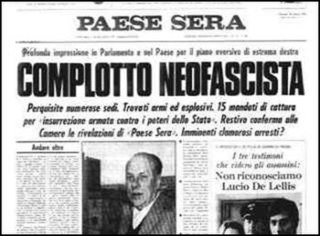 W
WThe Golpe Borghese was a failed Italian coup d'état allegedly planned for the night of 7 or 8 December 1970. It was named after Junio Valerio Borghese, an Italian World War II commander of the Xª MAS unit, convicted of fighting alongside Nazi Germany but not of war crimes, but still a hero in the eyes of many post-War Italian fascists. The coup attempt became publicly known when the left-wing journal Paese Sera ran the headline on the evening of 18 March 1971: Subversive plan against the Republic: far-right plot discovered.
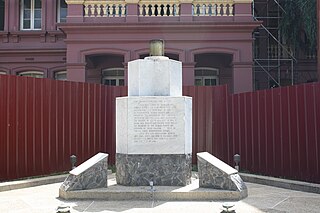 W
WThe Jamaat al Muslimeen coup attempt was an attempt to overthrow the government of Trinidad and Tobago, instigated on Friday, 27 July 1990. Over the course of six days, Jamaat al Muslimeen, a radical Islamic group, held hostages at the Red House and at the headquarters of the state-owned national television broadcaster, Trinidad and Tobago Television (TTT). On 1 August, the insurgents surrendered. They were charged with treason, but were ordered released by the Court of Appeal.
 W
WThe Kapsan Faction Incident was an unsuccessful attempt to undermine the power of Kim Il-sung, the leader of North Korea, around the year 1967. The "Kapsan faction" was a group of veterans of the anti-Japanese struggle of the 1930s and 1940s that was initially close to Kim Il-sung. In the wake of the 2nd Conference of the Workers' Party of Korea (WPK) in 1966, the faction sought to introduce economic reforms, challenge Kim Il-sung's cult of personality, and appoint its ringleader Pak Kum-chol as his successor.
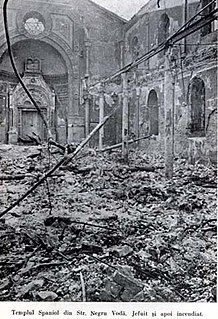 W
WThe Legionnaires' rebellion and the Bucharest pogrom occurred in Bucharest, Romania, between 21–23 January 1941. As the privileges of the Iron Guard paramilitary organization were being cut off gradually by the Conducător Ion Antonescu, its members, also known as the Legionnaires, revolted. During the rebellion and pogrom the Iron Guard killed 125 Jews, and 30 soldiers died in the confrontation with the rebels. Following this, the Iron Guard movement was banned and 9,000 of its members were imprisoned.
 W
WLorković–Vokić plot was a mid-1944 attempt initiated by the Minister of Interior, Mladen Lorković and Minister of Armed Forces, Ante Vokić, to form a coalition government with the Croatian Peasant Party (HSS), abandon the Axis powers and align the Independent State of Croatia with the Allies with the help of the Croatian Home Guard. The plan originated from the HSS which was also involved in the negotiations with the Allies. The plot ended with massive arrests and the execution of major plotters, including Lorković and Vokić.
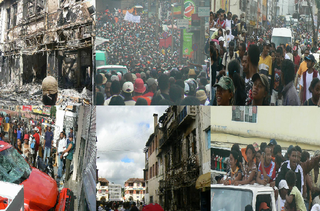 W
WThe 2009 Malagasy political crisis began on 26 January 2009 with the political opposition movement led by Antananarivo mayor Andry Rajoelina, which sought to oust President Marc Ravalomanana from the presidency. The crisis reached its climax on 21 March 2009 when Andry Rajoelina was declared the president of the High Transitional Authority of Madagascar, five days after Ravalomanana transferred his power to a military council and fled to South Africa.
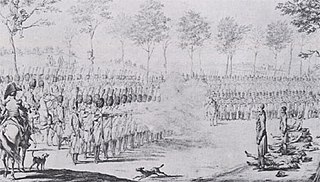 W
WThe Malet coup of 1812 was an attempted coup d'état in Paris, France, aimed at removing Napoleon I, then campaigning in Russia, from power. The coup was engineered by Republican general Claude François de Malet, who had spent time in prison because of his opposition to Napoleon. The coup failed, and the leading conspirators were executed.
 W
WThe Mäntsälä rebellion was a failed coup attempt by the Lapua Movement to overthrow the Finnish government.
 W
WOperation Green Sea was an amphibious attack on Conakry, the capital of Guinea, by between 350 and 420 Portuguese soldiers and Portuguese-led Guinean fighters in November 1970. The goals of the operation included the overthrow of Ahmed Sékou Touré's government, capture of the leader of the African Party for the Independence of Guinea and Cape Verde (PAIGC), Amílcar Cabral, destruction of the naval and air assets of the PAIGC and its Guinean supporters, and the rescue of Portuguese POWs held in Conakry.
 W
WThe Palace Revolt of 1912 was a failed uprising against the absolute monarchy of Siam. Discontent in the army during the reign of King Vajiravudh led to the unsuccessful coup.
 W
WWalter Pfrimer was an Austrian politician and leader of the Heimwehr in Styria. He was the leader of a failed putsch in 1931.
 W
WProject 571 was the numeric codename given to an alleged plot to execute a coup d'état against Chinese leader Mao Zedong in 1971 by the supporters of Lin Biao, then Vice-Chairman of the Communist Party of China. In Chinese, the numbers "5-7-1" sound like the term "armed uprising". The Chinese government initially claimed that Lin Biao himself had devised Project 571, but evidence inside and outside of China has made it more likely that Lin's son, Lin Liguo, a high-ranking officer in the People's Liberation Army Air Force, instead developed the plot. Any plots that may have been planned or attempted by Lin Biao or his family ultimately failed. Lin's family attempted to flee China for the Soviet Union, but died when their plane crashed over Mongolia on September 13, 1971. A draft copy of the Project 571 Outline was discovered following Lin's death, and was publicly circulated by the Chinese government as a means of explaining the event.
 W
WOperation Quartz was a planned military operation to be conducted by the Rhodesian armed forces against Robert Mugabe and ZANU-PF in the event that party lost the Southern Rhodesian general election, 1980. The operation was organized on the assumption ZANU-PF would attempt to violently seize the government should it lose the election. ZANU-PF ultimately won the election and Operation Quartz was never executed.
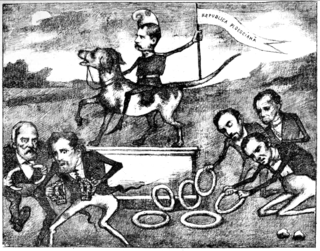 W
WThe Republic of Ploiești was a revolt against the Romanian monarchy in the city of Ploiești, Romania, on August 8, 1870.
 W
WThe Ridolfi plot was a plot in 1571 to assassinate Queen Elizabeth I of England and replace her with Mary, Queen of Scots. The plot was hatched and planned by Roberto Ridolfi, an international banker who was able to travel between Brussels, Rome and Madrid to gather support without attracting too much suspicion.
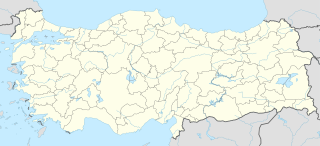 W
WThe 15 July 2016 coup d'état was attempted in Turkey against state institutions, including the government and President Recep Tayyip Erdoğan. The attempt was carried out by a faction within the Turkish Armed Forces that organized themselves as the Peace at Home Council. They attempted to seize control of several key places in Ankara, Istanbul, Marmaris and elsewhere, but failed to do so after forces loyal to the state defeated them. The Council cited an erosion of secularism, elimination of democratic rule, disregard for human rights, and Turkey's loss of credibility in the international arena as reasons for the coup. The government said the coup leaders were linked to the Gülen movement, which is designated as a terrorist organization by the Republic of Turkey and led by Fethullah Gülen, a Turkish businessman and cleric who lives in Pennsylvania. The Turkish government alleged that Gülen was behind the coup and that the United States was harboring him. Events surrounding the coup attempt and the purges in its aftermath reflect a complex power struggle between Islamist elites in Turkey.